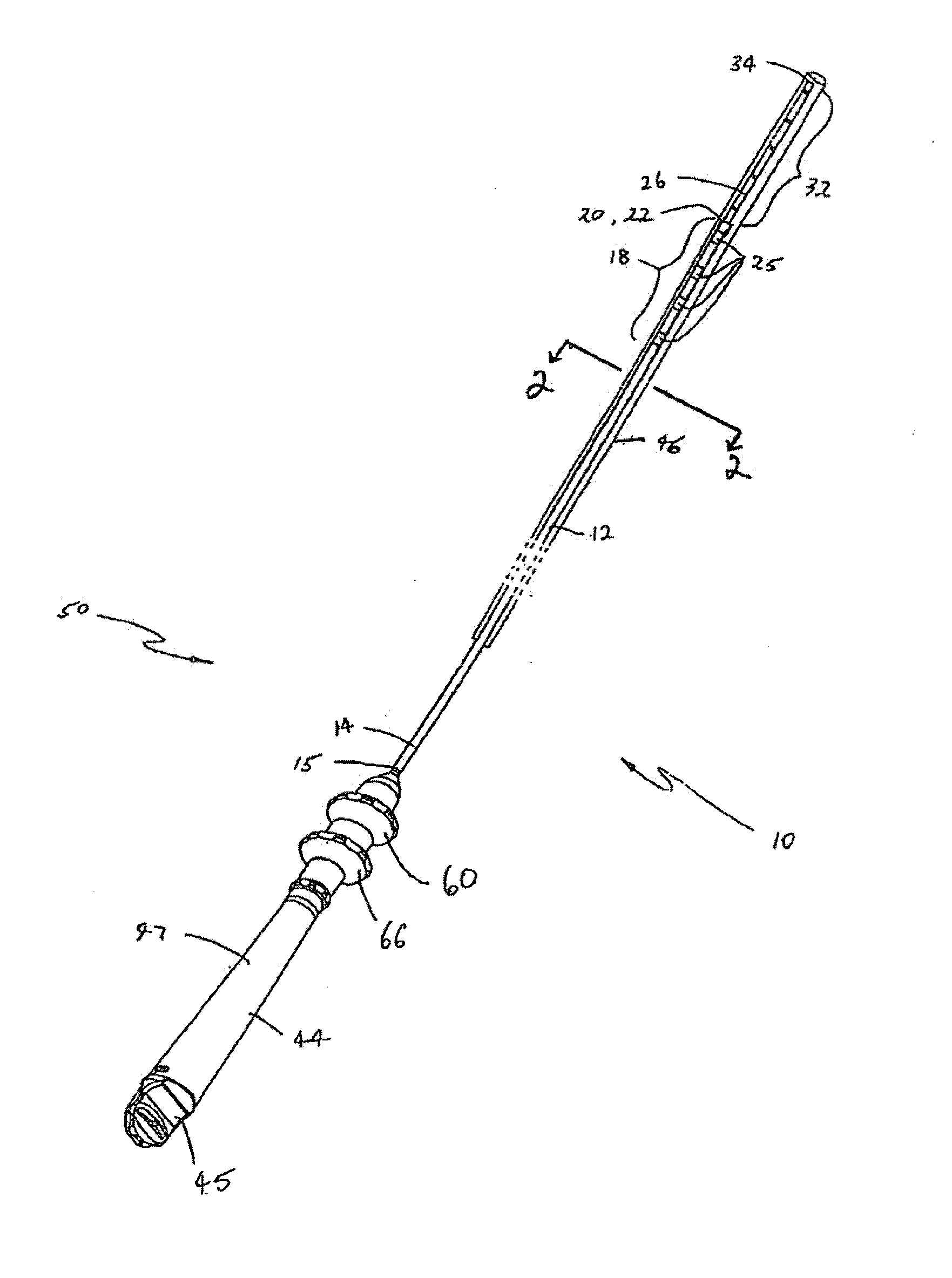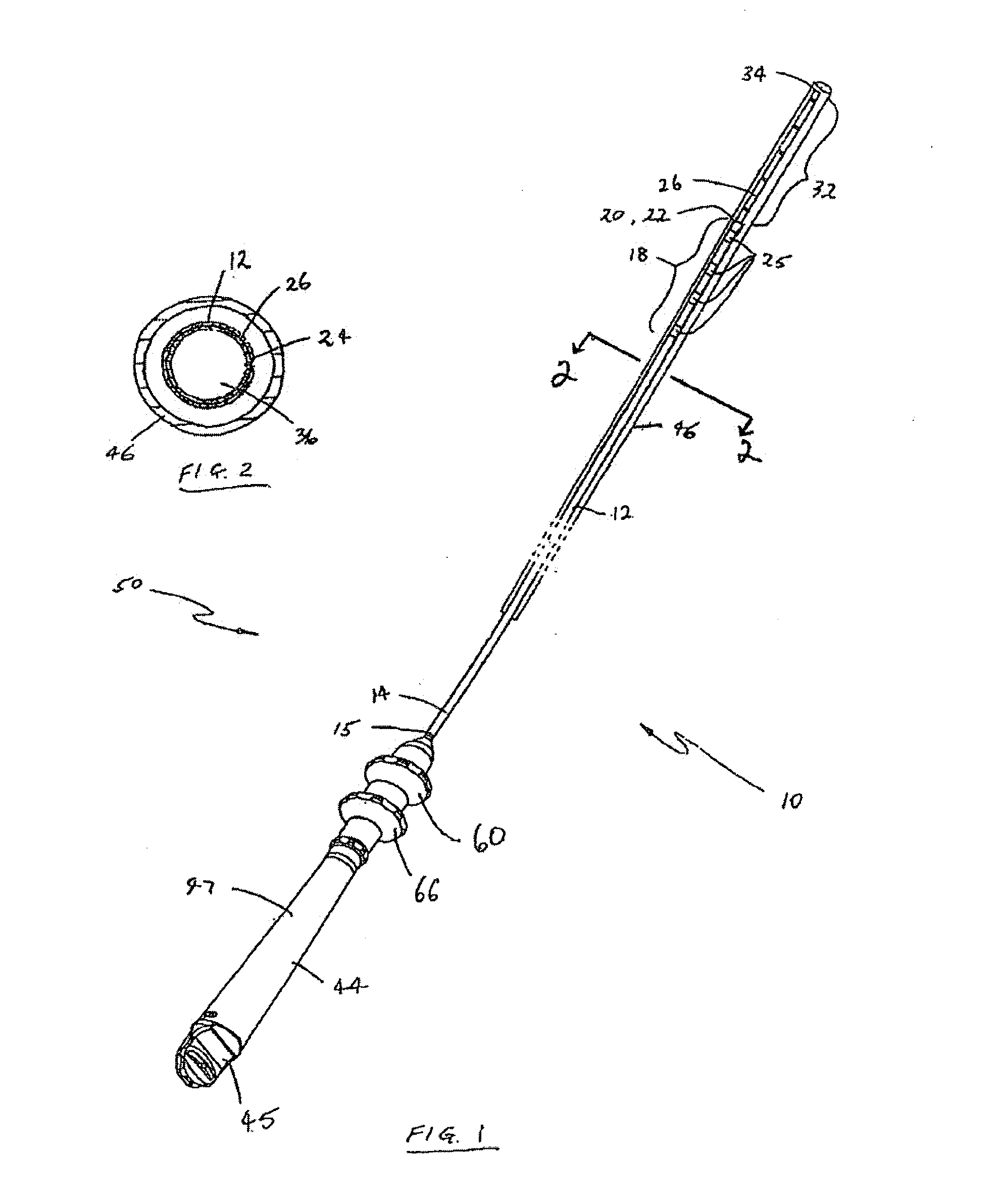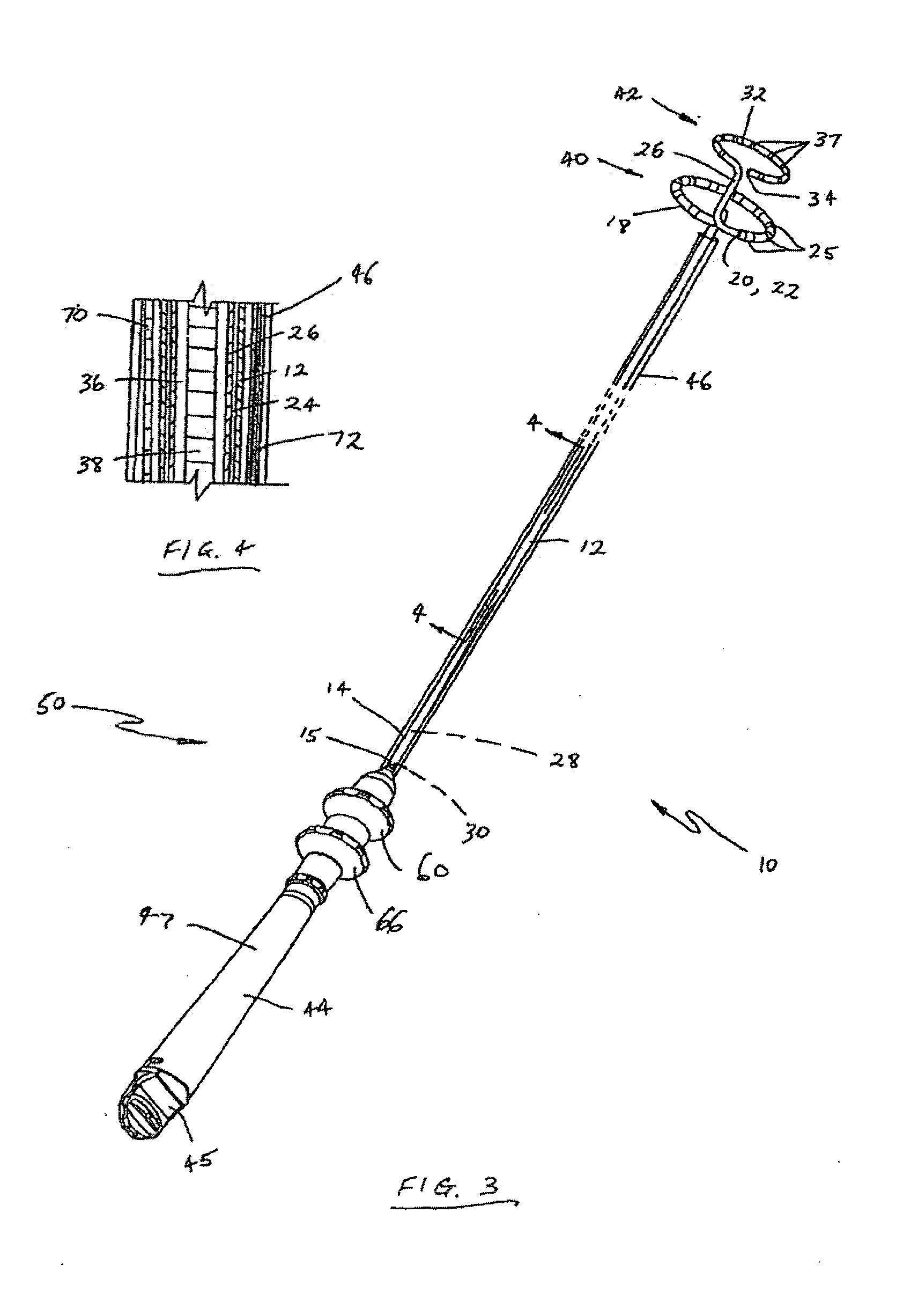Catheter assembly
a catheter and assembly technology, applied in the field of catheter assembly, can solve the problems of inconvenient assembly, long exposure to radiation or drugs during the procedure, and the predetermined configuration of the inner and outer catheter, and achieve the effect of sufficient flexibility
- Summary
- Abstract
- Description
- Claims
- Application Information
AI Technical Summary
Benefits of technology
Problems solved by technology
Method used
Image
Examples
Embodiment Construction
[0055]In the drawings, reference numeral 10 generally designates an embodiment of a catheter assembly. The catheter assembly 10 includes a first elongate tubular member 12 having a proximal end portion 14 defining a proximal end 15 and a distal end portion 18 defining a distal end 22. An opening 20 is located at the distal end 22 of the first tubular member 12. The tubular member 12 defines a lumen 24 extending between the proximal end 15 and the distal end 22. A plurality of electrodes 25 are provided at spaced intervals on the distal end portion 18 of the first elongate tubular member 12. In this embodiment, the electrodes 25 are used for ablation purposes.
[0056]A second elongate tubular member 26 is received in the lumen 24 of the first tubular member 12. In this embodiment, the second tubular member 26 is slidable axially in the lumen 24 of the first tubular member 12. The second tubular member 26 also includes a proximal end portion 28 defining a proximal end 30 and a distal en...
PUM
 Login to View More
Login to View More Abstract
Description
Claims
Application Information
 Login to View More
Login to View More - R&D
- Intellectual Property
- Life Sciences
- Materials
- Tech Scout
- Unparalleled Data Quality
- Higher Quality Content
- 60% Fewer Hallucinations
Browse by: Latest US Patents, China's latest patents, Technical Efficacy Thesaurus, Application Domain, Technology Topic, Popular Technical Reports.
© 2025 PatSnap. All rights reserved.Legal|Privacy policy|Modern Slavery Act Transparency Statement|Sitemap|About US| Contact US: help@patsnap.com



